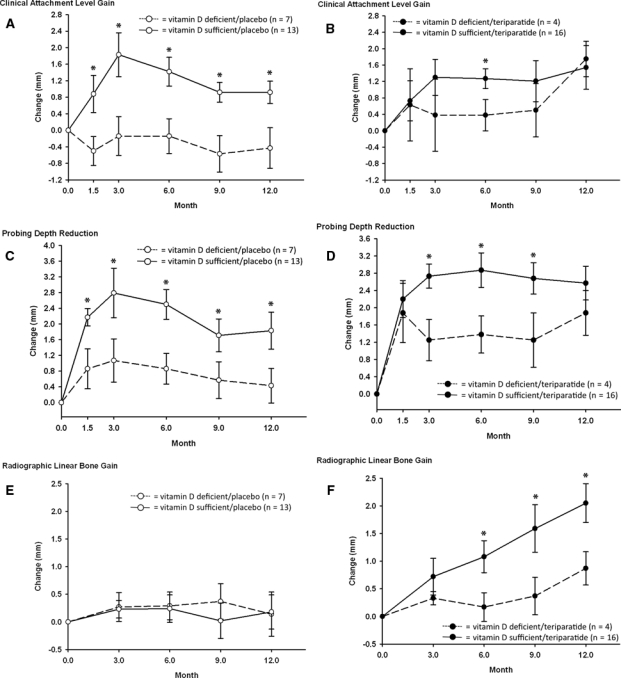Figure.

Clinical and radiographic outcomes of vitamin-D-sufficient and -deficient participants supplemented with placebo or teriparatide for 6 wks. Mean (± SE) changes from baseline for clinical attachment level gain (A, B), probing depth reduction (C, D), and linear defect resolution as measured radiographically with bitewing radiographs (E, F). In participants taking placebo, clinical attachment level gain was significantly greater in vitamin-D-sufficient individuals at all time-points, with vitamin-D-deficient persons experiencing a loss of attachment compared with baseline (A, p < 0.01). Probing depth reductions were significantly greater in vitamin-D-sufficient participants compared with vitamin-D-deficient participants at all time-points (C, p < 0.01). Neither group experienced significant radiographic defect resolution compared with baseline, or between groups (E, p = NS). For those supplemented with teriparatide, both vitamin-D-sufficient and -deficient groups experienced significant improvement in all parameters at 12 mos compared with baseline (B,D,F, p < 0.01). Clinical attachment level gain and probing depth reduction were not significantly different between vitamin D groups at the 12-month time-point, although vitamin-D-deficient participants had significantly less improvement in clinical attachment gain at 6 mos (B, p < 0.01) and significantly less improvement in probing depth reduction at 3, 6, and 9 mos (D, p < 0.01). Teriparatide recipients who were vitamin-D-sufficient experienced significantly greater radiographic linear defect resolution than -deficient participants beginning at 6 mos (F, p = 0.03).
